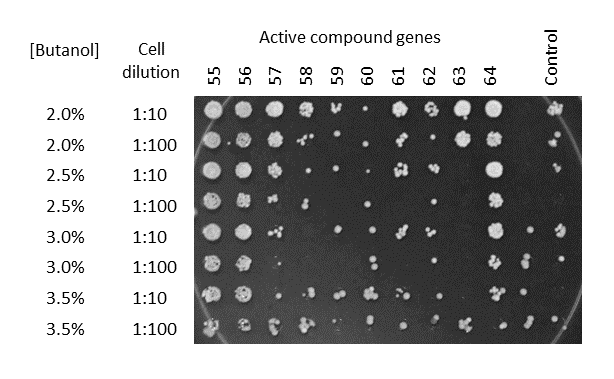Microbes are employed in myriad ways to make useful and valuable products. Various genetic approaches are used to increase phenotypic diversity and optimize product yield and cell growth in bio-production systems. However, current genetic methods are limiting in achieving such optimizations, mainly because biological systems tend to be robust and their properties resistant to genetic changes introduced by man.
The Function Generator™ technology represents a powerful new empirical way of increasing phenotypic diversity for productivity enhancements and growth optimizations of industrial microbes. The technology employs a mechanism for modifying biological function which is natural, yet rarely observed in nature. Compound genes are assembled from a genome-wide set of native coding sequences. Novel genes conferring improved phenotypes are constructed in a manner that reduces the ability of an organism to compensate for changes in its regulatory machinery. High-complexity combinatorial expression libraries of these Function Generator™ genes are then transferred into an organism of interest followed by selection or screening for desirable characteristics.
Function Generator Technology™
- Combinatorial gain-of-function technology based on genome-wide combination and re-assortment of coding sequences in translational fusions to generate novel genes
- Novel mechanism for altering biological phenotypes
- Accelerated evolution through generation of functional and phenotypic diversity
- Increased probability of trait improvement
- Novel genes and traits are created by randomly combining preselected input sequences into large combinatorial libraries

Advantages over competitive technologies
- Rapid
- phenotypes created in weeks
- Low cost
-
- inexpensive analysis and reagents
- straightforward procedure, low labor requirement
- Flexible
-
- can be applied to any organism
- iterative improvements
- inexhaustible supply of input sequences (i.e. >1000 sequenced bacterial genomes)
- Effective
-
- inherently suited to alter biological control mechanisms
- superior to existing methods for genetic improvement
- combinatorial power increases chances of a hit
- Scalable
- any number of input sequences
- Transferable
- facile trait transfer to other strains and organisms
- Predictive
- initial screens yield data about sequencea combinations that are effective for specific traits
- Stackable
- artificial genetic pathways solely based on functional selections
- Patentable
- generation of new patentable genes involving the 'hand of man'
Technology validation in yeast
Function Generator™ technology efficacy was demonstrated in a feasibility project in baker's yeast Saccharomyces cerevisiae. We successfully isolated novel genes conferring high levels of tolerance to a variety of toxic chemicals and abiotic stresses including ethanol, butanol, isobutanol, heat, cold, salt and low pH. The panel below shows an example of the butanol-tolerant phenotype. Ten yeast transformants containing active genes were tested for cell viability after 48 hours exposure to different concentrations of butanol. The most active genes increased butanol tolerance from <2% in the wild type strain to >3.5% in selected transformants expressing Function Generator™ genes.
Comparisons and controls
The Function Generator™ library was compared to an overexpression library to compare the quality of the resulting phenotypes. After two rounds of selection in ethanol, butanol and isobutanol, genes isolated from the Function Generator™ library conferred, on average, >200x higher levels of cell survival in lethal concentrations of the alcohols than genes isolated from the overexpression library. This result demonstrates the superiority of Function Generator™ for generating transferable traits in yeast.In a separate study, a number of active compound genes isolated from the Function Generator™ library were 'deconstructed' and activities determined for all individual sequences. The activity of multiple active compound genes greatly surpassed the additive activities of their constituent sequences, clearly demonstrating the gain-of-function principle of the technology.
